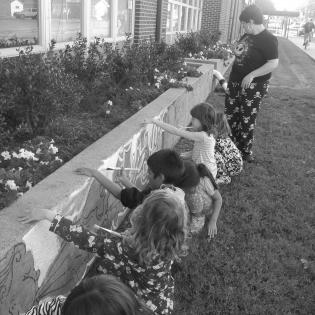What's in a Name?
The young people reflect upon themselves as community members and use descriptive language to give themselves meaningful names.
reflect with self-awareness to give themselves a name descriptive of their role in community
- The Legend of the Bluebonnet by Tomie de Paola
De Paola, Tomie. The Legend of the Bluebonnet. New York: Scholastic, Inc., 1983.
Instructions
Anticipatory Set
Ask, "At the beginning of the story, what was the girl's name and why did she have that name?" (She-Who-Is-Alone got her name because her family died in the famine).
By the end of the story, the community changed her name to One-Who-Dearly-Loved-Her-People. This was how they saw her value to the community.
Discuss the idea of using our gifts (knowledge, talents, and interests) to make the world (or community) better. Talk about things we can do to make the world better.
- Plant seeds, grow gardens, recycle
- Avoid being wasteful with resources and food
- Show kindness and find good in others
It is our life's work to understand our gifts/purpose and use it to create good. Think ahead to your vision of yourself in 10 or 20 years. How would you like the community to see you? What would you want your name to be?
Write your new name in large letters on a paper and decorate it. Talk about things you can do to work toward earning that name.
Discuss what the children come up with. Are any of the actions selfless?
Philanthropy Framework
-
Strand PHIL.II Philanthropy and Civil Society
-
Standard PCS 01. Self, citizenship, and society
-
Benchmark E.4 Describe the characteristics of someone who helps others.
-
-
